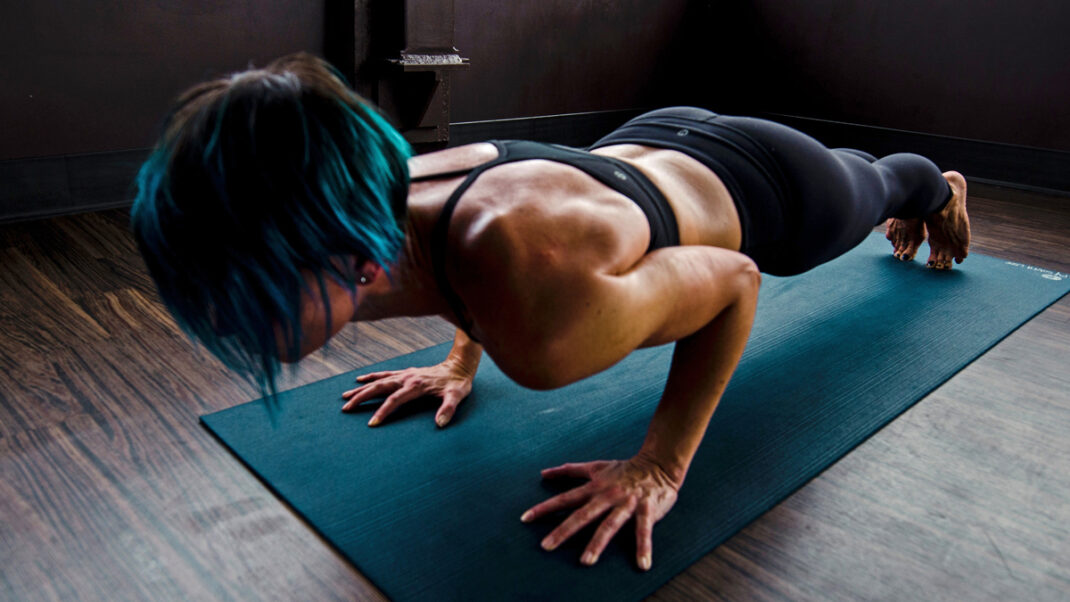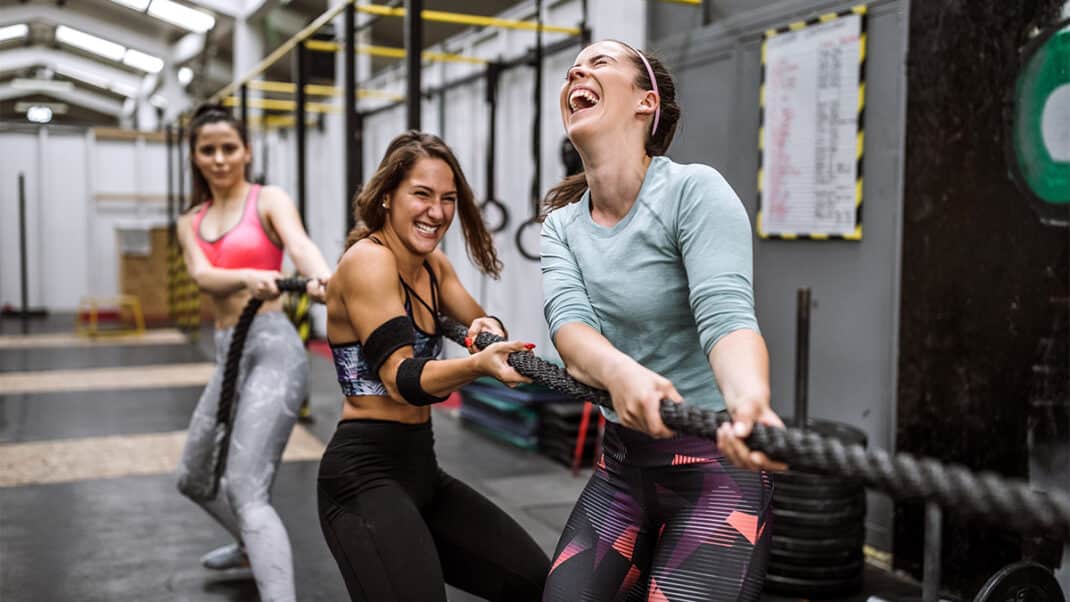Martial Arts Fusion Classes Pack a Punch

Looking to add punch to your current classes or personal training sessions? If so, try mixing your martial arts formats with other fitness modalities to create winning fusion classes! According to IDEA’s latest Fitness Programs and Equipment Survey, 70 percent of survey respondents currently offer some kind of combination class (October 2002 IDEA Fitness Manager).
Not Your Father’s
Martial Arts Formats
Today’s martial-arts-based classes have progressed because consumers are seeking more diversity in training, say many longtime instructors.
“Much like step, kickboxing is transforming,” says Chalene Johnson, creator of Turbo Kick™, a martial arts fusion program now offered at more than 2,000 fitness facilities worldwide. “Many participants have been kicking and punching for 6 or more years, and now they are looking for more.”
Johnson compares veteran kickboxers to advanced step participants, who are always seeking more intricate choreography and more interesting step patterns; if they don’t get what they are looking for, they go elsewhere. “Clubs that failed to recognize this trend have seen a dramatic decrease in their kickboxing participation since the initial interest waned,” she says.
Incorporating other fitness modalities into martial arts classes can combat member attrition in a number of ways, says Johnson, who is based in Laguna Hills, California. “The majority of our participants today are females who are not interested in learning to fight. They are drawn to newer formats that place more emphasis on the element of fun. These classes allow students to break out of the military style of kickboxing and play with simple dance movements in between the kicks and punches.” To accommodate what students want, Johnson created Turbo Kick, which fuses elements of “dance, muay tai kickboxing, cardio kickboxing, athletic drills and kata-stylized kicks.”
Other martial arts instructors are also expanding their format repertoires. Katalin Zamiar is the owner of POW! Mixed Martial Arts and Fitness in Chicago, which she says is the largest martial arts fusion program in the state of Illinois. Zatalin teaches a full roster of fusion classes, including “Integrated Flexibility,” which blends kung fu with yoga poses; “Martial Arts on the BOSU®,” which “supersets” martial arts defensive maneuvers and t’ai chi moves with sport-specific drills performed on one or more domes; and “Martial Athletics,” a sports conditioning class that incorporates traditional martial arts movements.
Mixing Things Up
Almost anything goes when it comes to today’s innovative programming. Instructors are fusing different types of martial arts with step moves, strength training, water fitness and kids’ formats, to name but a few. >
Some martial arts fusion formats depend heavily on choreography. For example, Tom Seabourne, PhD, teaches a class called “Kata,” which he says is “dance-like but utilizes focus and power to increase intensity.” Seabourne, director of kinesiology at Northeast Texas Community College in Mt. Pleasant, Texas, describes “Kata” as “a series of choreographed movements performed against an imaginary opponent.” He fuses this format with stretching exercises and balance poses derived from yoga.
At Fitness Express International Inc.
in Miami, Janis Saffell and Guillermo Gomez offer a virtual smorgasbord of martial arts fusion classes. Classes incorporate circuit training, strength training, ballet drills, Zen breathing techniques, Pilates and step with traditional martial arts formats like aikido, tae kwon do, jujitsu and karate. “The biggest challenge we face is teaching multiple levels—showing modifications and keeping the die-hards motivated while keeping everyone else safe,” say Saffell and Gomez.
Ilaria Montagnani, an instructor who teaches at several clubs in New York City, merges conventional martial arts moves with muscle-sculpting exercises in her “Body Strikes” class. One challenge she faces is ensuring that students perform new movements correctly in order to avoid injuries.
“I start all my classes with technique training and repeatedly explain and correct the moves, with particular emphasis on how to protect the elbows and knees,” she says. Montagnani says it’s best to go slowly when fusing new formats into a martial arts class. “Each class should incorporate only a few new moves because it is unrealistic to expect students to be able to perform everything correctly.”
Add in Bells & Whistles
Another thing that separates today’s martial arts classes from their predecessors is the way instructors rely on music and equipment. “Utilize equipment you have in your gym, like hand grips, steps, tubing and resistance balls,” Saffell and Gomez advise. “We use jump ropes, paddles, the Body Bar® and step benches.”
Zamiar also uses a host of fitness equipment in her martial arts classes, citing boxing gloves and mitts, resistance tubing, BOSU balance trainers, resistance balls, foam rollers, indoor cycles, medicine balls and paddles. But she says instructors need to explain each piece of equipment they introduce into a martial arts class. “Make sure students are not intimidated by new gear, especially if it looks hard, like the BOSU.”
Music is another tool that can enhance a martial arts fusion class, especially as
a way to ease the transition from one
format to another. “We use music recorded at about 138 beats per minute, but we encourage our instructors to slow the music when kicking or when participants seem to be lacking in execution,” says Johnson. She also likes to merge different music formats into one class. “Our music combines rap, pop, disco and ‘old school’ with heavy bass and hard-pounding beats!”
“Music is very important to any kickboxing class,” says Saffell. “It sets the mood of the class and gets participants motivated to do their very best.”
When it comes to music selections, instructors are eclectic. Some prefer conventional, slower music, while others are exploring new sounds. “I always use edgy, tribal trance music,” says Montagnani.
Whether it’s music, equipment or a format you’re selecting, the biggest challenge you may face when creating your own martial arts fusion class is sorting out all the available choices!
- Kickbox Step: kickboxing combinations on the step
- Lethal Legs: tae kwon do, ballet
- Martial Arts Flexibility: kung fu, yoga
- Martial Athletics: sport-specific kicking, punching and stance drills
- Powerstrike: karate, kickboxing, cardio format
- Turbo Kick: dance, tae kwon do, boxing, t’ai chi, hip hop
One thing today’s instructors are desperately trying to combat is the impression that martial arts are unsafe—a rap that many say is undeserved.
“Kickboxing started to get a bad name because nonexercisers and fitness enthusiasts all bought videos and went straight for the advanced workouts instead of starting with the basics,” according to Saffell. “Everyone wants instant gratification, but then they get hurt because they skip the progressions.”
Johnson insists that martial arts are no more unsafe than other fitness formats and, in some cases, may actually be safer. “In my 7-plus years of teaching fitness kickboxing, I have never seen an injury in a class,” she says. “As a step instructor, however, I still see and hear about countless injuries.”
That said, many of the experts interviewed do take precautionary measures when teaching their martial arts fusion classes. For example, when introducing equipment in her classes, Zamiar has her students start out by performing short, easy exercises. “Also, I feature a new [equipment] topic each month,” she says. “Then I spend that entire month [focusing on] that new piece of gear in as many classes as possible.”
Seabourne shares this advice:
- Start slowly and progress moves gradually.
- Caution students never to fully extend their elbows or knees.
- Recognize the need to avoid “rushing” anyone who is not ready to move forward.
- Tell advanced students to wait for their slower classmates.Saffell and Gomez add the following tips:
- Require that all instructors have reputable kickboxing certifications; even better, try to hire people with a martial arts background.
- Ensure that all instructors keep music speed within established industry guidelines.
- Advise staff to go over basic techniques in every warm-up and progress movements slowly.




